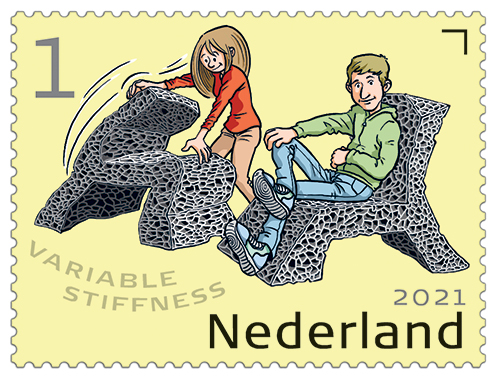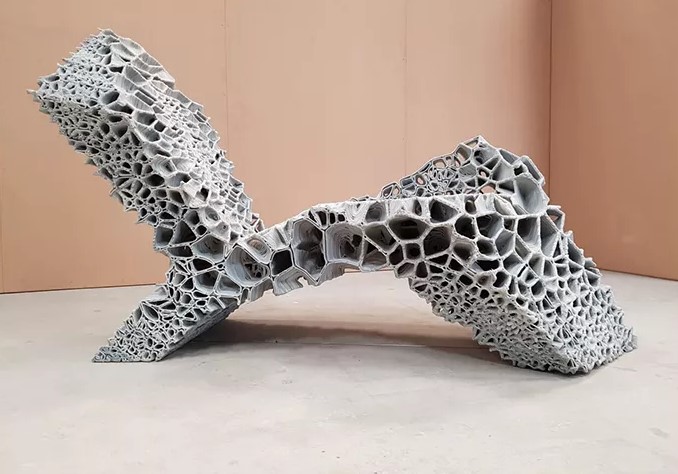
A futuristic chaise longue, 3D printed by a robot, that can be transformed into a recliner (and back again). Not everyday design, but it looks comfortable, the innovation on this stamp. There is a chance that this invention is not only applicable on Earth, but will play an important role in the future in the construction of underground settlements on Mars, says leader of the Robotic Building lab (Architecture), Henriette Bier.
How did the idea for a deformable chaise longue, 3D printed by a robot, come about?
“The idea arose when we were developing the material design. We found that we could control the stiffness, thus creating a multifunctional design. We first tested it on a small scale and then applied it to a chaise longue. Why? That is typical for architects: we design buildings and their interiors and a piece of furniture lends itself well for a prototype. We used a robot for the 3D printing, because it offers many possibilities to produce complex geometries that would be otherwise impossible to construct.”
What successes have you had so far?
“The chaise longue has been exhibited during the Dutch Design Week 2018 in Eindhoven, at the Material District 2019 in Rotterdam and is currently on display at the Experimental Architecture Biennale in Prague. Also, it has had wide coverage in scientific and popular publications. We are now working to further develop the material. We see several applications where it is important to have a material that can be both rigid and flexible. Think of urban furniture or playgrounds in the city. They become a lot safer when using this technique. We also look at making the material with which we print more sustainable and have printed with wood-based polymers.”

What challenges have you faced?
“One of the challenges was the material design: it had to show the behavior we wanted. Another challenge was the 3D printing process, which had to take place without support. The main rule to printing without support is that the angles in the geometry have to be under 45 degrees. We succeeded and the chaise longue was printed quite smoothly in 30 hours session at 3D Robot Printing. We use robots for this, as we have at TU Delft a lot of expertise in this area. We also research how humans and robots work together in the future, because 50% of work be completely automated but 45 % will result from human-robot collaboration in architecture and the built environment.”
What does the future look like?
“We are now working on how we can use this technology for extra-terrestrial applications! We are doing a project with ESA and Vertico, in which we are investigating how we could 3D print future underground habitats (because of the radiation) for astronauts on Mars with mobile robots, using regolith and cement-based concrete that is produced on site. These will of course be autonomous robots, and AI will also play a major role. After that, we would also like to explore how we can use the material design developed for the chaise longue to insulate and seal these accommodations – and of course to make furniture.”
Why is it good that this innovation is now 'going around the world'?
“I'm happy with this initiative, because it's a good way to make science accessible to a large audience. It makes complex science visible in a simple way. It can even pique children's interest in science when they see this stamp. I hope that will happen!”